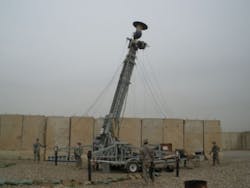Military medium- and heavy-weight helicopter production to peak in 2013, then decline through end of decade
Forecast International says a medium/heavy rotorcraft has a gross weight of at least 15,000 pounds. Helicopters included in the study include the AgustaWestland AW101; Bell/Boeing V-22 Osprey tiltrotor, Boeing CH-47 Chinook and AH-64 Apache, Eurocopter AS 332/532/EC 225/725; KAI Korean utility helicopter, Kamov Ka-28/29/31/32, Ka-50/52, and Ka-60/62; Mil Mi-8/17, Mi-24, Mi-26, and Mi-28; NH Industries NH90; and Sikorsky CH-53/MH-53, S-92, SH/MH-60 Seahawk, and UH-60/S-70 Black Hawk.
The winding down of U.S. wars in Iraq and Afghanistan also are putting downward pressure on U.S. defense spending, analysts point out. "Efforts to close the U.S. budget deficit will result in future trade-offs that negatively impact Pentagon spending levels," says Raymond Jaworowski, senior aerospace analyst at Forecast International. "Even without this budgetary pressure, though, the current modernization cycle in U.S. military rotorcraft procurement would be nearing an end."
The Forecast International study includes market share projections by company through this decade. For more information contact Forecast International online at www.forecastinternational.com.
